首頁 » Courses » College of Design » Master Program in Cultural & Creative Design
Master Program in Cultural & Creative Design
Master Program in Cultural & Creative Design – Research on Cultural & Creative Industry
Course Name | Research on Cultural & Creative Industry | ||||||||||||||||||||||||||
Course ID | CC003R | Course credits | 3 | Teaching hourly fee | 3 | ||||||||||||||||||||||
Teacher | Chen Yu-Chin, Chen Li-Yu, | Department/Grade | The first year of the Master Program in Cultural & Creative Design | Required/Elective course | Elective | ||||||||||||||||||||||
1 | Type of Service (Multiple options allowed) | □ Educational counseling □ Information technology ■ Creative design ■ Community development □ Marketing and promotion ■ Social service □ International care □ Cultural archives □ Environmental protection □ Others ____________________ | |||||||||||||||||||||||||
2 | Recitals (Evaluation on Service Programs) | The “service learning” aims to promote the courses combining “service” and “learning”. By upholding the experiential education as the main scheme, we communicate the importance of combination of “profession”, “service” and “learning” through scheduled community service programs to boost the reciprocal development of the school, students and communities. | |||||||||||||||||||||||||
3 | Objectives of Plan | To experience the environment personally and interact with the locals, and also establish the correct value about service learning and knowledge service, by means of self-discipline and teamwork. | |||||||||||||||||||||||||
4 | Cooperative entities | Name of Organization or Community receiving the service: Jasmine Humanistic Evironment Education Center | |||||||||||||||||||||||||
Service Recipient Lukang Township, Changhua,Number of service recipients: 86.11 thousand persons. | |||||||||||||||||||||||||||
5 | Objectives of Courses | To see the life and needs of the people who are completely different those the students thought based on their past personal experience. Meanwhile, by comparing themselves with these people, the students may feel their own physical and mental needs. Then, the students shall think about the relationship between them and others and then know how to care for others to achieve the ultimate purpose of service learning. | |||||||||||||||||||||||||
6 | Model and contents of implementation of service programs ( to the contents of courses for 18 weeks on a weekly basis) |
(Please added the lines, if necessary.) | |||||||||||||||||||||||||
7 | Total service learning hours | Total course hours: 54 hours Students’ actual service hours: 48 hours | |||||||||||||||||||||||||
Number of student teams: a total of 3 teams, consisting of 25 persons. Total number of service recipients: 86.11 thousand persons (number of service recipients*number of frequency). | |||||||||||||||||||||||||||
8 | Descriptions about students’ growth in professions | Teamwork and professional division of labor have become the indispensable abilities required by the major in cultural & creative. In this service learning activity, the students need to spend a lot of time in teamwork. The students contact such learning all the times not only during the service learning but also after and before the service learning. | |||||||||||||||||||||||||
9 | Descriptions about expected students’ growth in professions | The young people who have successively returned to Lukang in the most recent years form the new force to help the local development, as they help rescue and preserve the cultural relics and traditions about to extinguish in Lukang. The process may be very tough, as it is not possible to achieve all objectives in a short term. Notwithstanding, all of them are still working very hard to rebuild these cultures and working on the innovative approaches to protect their homeland to prevent these traditions from extinguishing again. | |||||||||||||||||||||||||
10 | Rating criteria (Please include the way to assess service programs.) | Creative design: 35% Thinking and professional ability: 35%; Service learning: 30% | |||||||||||||||||||||||||

